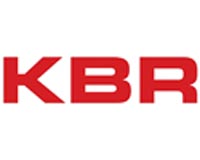| . |  |
. |
Geneva (AFP) Nov 13, 2009 A "catastrophic accumulation" of millions of tonnes of "e-waste" from computers, cellphones and television sets is fuelling a global pile of hazardous waste, an international body warned Friday. Figures due to be released by the Basel Convention on transboundary movement of hazardous waste will show that the amount of discarded electronic goods has grown exponentially in recent years, officials said. The convention's office said the stockpile, which includes toxic heavy metals and hazardous chemicals, needed to be tackled swiftly. "I'd say it's something in the region of six billion tonnes, it's a rough estimate," said Katharina Kummer Peiry, executive secretary of the international agreement, which was signed in 1989. "E-waste did not even exist as a waste stream in 1989 and now it's one of the largest and growing exponentially," she told journalists. A report by experts for the UN Environment Programme (UNEP) estimated that the flow would soon reach 50 million tonnes a year, generated at three times the rate of other solid municipal waste. The Basel Convention underlined that e-waste was a by-product of the business and consumer boom in electronic communications. "Add an increasing demand for electronic gaming, higher definition televisions or smart cars, and the result is a catastrophic accumulation of e-waste, now and into the future," it added in a statement. The experts advising UNEP flagged electronic scrap as "one of the topical environmental issues of the 21st century," especially with the shorter useful lifespan of each generation of hardware as technological development accelerates. Extracts of data released on Friday showed that transboundary movements of overall hazardous waste grew by about a fifth from 9.35 million tonnes in 2005 to 11.25 million tonnes in 2006. Some 172 countries have signed up to the Basel Convention, which regulates international movements of hazardous and toxic wastes, amongst others by ensuring that all shipments are approved by the receiving country. Apart from preventing "toxic colonialism" -- developing countries being used as dumps for toxic waste from industrialised nations -- the convention also hoped to stem cross border movement of industrial waste in order to encourage nations to dispose of their own. But movements have grown this decade, as has the number of countries trading such waste. Some 101 countries were exporters in 2006, against 63 two years earlier. Officials also admit that substantial illicit trade in chemical and hazardous waste is still not accounted for. The UNEP report noted that a "significant" amount of "end-of-life" gadgetry, appliances and computers were now being imported into developing countries for reuse, refurbishment or processing. Cheap labour costs, weak environmental and health rules made those nations attractive destinations, they argued, while second-hand items sent to poorer nations for extended use eventually ended up on a scrapheap in a different country to where they were bought. Several nations on Friday highlighted the issue of e-waste ahead of the 20th anniversary celebrations for the Basel Convention on November 17. "The Basel regime is still too much focused on hazardous wastes, it does not sufficiently reflect that products can be brought to countries and become waste later," said Swiss ambassador Dante Martinelli. Share This Article With Planet Earth
Related Links Our Polluted World and Cleaning It Up
 KBR hit by lawsuits over Iraq, Afghanistan waste disposal
KBR hit by lawsuits over Iraq, Afghanistan waste disposalWashington (AFP) Nov 10, 2009 Dozens of US military personnel have filed 34 lawsuits against KBR accusing the defense contractor of incinerating and releasing into the atmosphere toxic waste in Iraq and Afghanistan. Susan Burke, one of the lawyers bringing the suits, said they have been filed over the past year, 18 of them in recent days. "All the cases are being put together before a federal judge in Greenbelt, Mary ... read more |
|
| The content herein, unless otherwise known to be public domain, are Copyright 1995-2009 - SpaceDaily. AFP and UPI Wire Stories are copyright Agence France-Presse and United Press International. ESA Portal Reports are copyright European Space Agency. All NASA sourced material is public domain. Additional copyrights may apply in whole or part to other bona fide parties. Advertising does not imply endorsement,agreement or approval of any opinions, statements or information provided by SpaceDaily on any Web page published or hosted by SpaceDaily. Privacy Statement |